Iceland was settled by the Scandinavians in 874 AD by adventurous people fleeing civil strife and over-population of the home states. With no native population, and no large predators, it seemed that the untamed elements were the only thing settlers would have to war against. But as time when on it became clear that amongst the black rocks and deep caves of this island lay ancient magic, and mystical people who had lived there since the giant ogre named Ymir appeared out of the thawing drops of a new, and fierce, world.

The oddest thing you may notice when visiting Iceland is the strange piles of rocks that buildings and roads refuse to disturb. The formations are said to be the common homes of two types of ‘invisible people’: the Álfar “Elves”, and the Huldufólk “hidden people”. The huldufólk are said to be tall and handsome, while the Elves are said to be rather strange, with oddly proportioned features and long spindly legs. They are excellent craftsmen and farmers, and posses a deep understanding and connection with the land itself. But though both elves and hidden people are said to possess considerable magical power, they can still be forced to aid you if you can manage to outsmart them. They say, for instance, that if one can block the path of a huldufólk they will not be able to pass, and they will offer you gifts and treasure to get you to move; if you agree to this and move out of the way they will immediately be freed and likely disappear again leaving you with nothing. If you, however, stay resolute and do not give in to their offers, it is said that you may be greatly rewarded. Though both elves and huldufólk are said to have a somewhat mischievous nature, they are generally well-tempered and often kind. There are boatloads of stories about the hidden ones aiding farmers and craftsmen they deem worthy, and more than a few stories of huldufólk and human relations. They are not without anger though, which can be provoked if they are disrespected, and turn into vengeance if they are harmed. Icelandic children are told not to throw rocks because it may strike one of the invisible elves and huldufólk and bring harm upon the child’s family
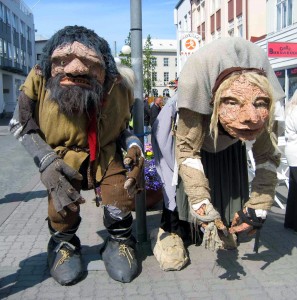 Among the darker caves and crevices of Iceland live another people called the Trolls. Trolls may be humanoid in form, but their strength, size and ugliness is from another world. But do not fear, for if you keep yourself in the sight of the sun they cannot harm you. If trolls are exposed to daylight they will immediately be turned into stone. There is a site, Reynisdrangar, off Iceland’s south coast that can give you an idea what this looks like. Legends says that the massive rock formations are all that is left of the body’s of three massive trolls who where dragging a ship to shore when they were caught in the merciful dawn sun. It’s said that their raging voices can be heard in the howling winds of the sea, longing to break free. But do not fear too greatly, though trolls do have a fierce and often monstrous temperament, they can act with decency at times. They will, for example, return a favor for a favor, and act kindly on those who do them well. They are fine feasters and craftsmen, farmers and fishers and occasionally lovers of humans, ending with half troll offspring that are said to be surprisingly beautiful. Never-the-less one should be warned, for despite all the admirable qualities mentioned there has been a long standing fear (and plenty of stories describing) the brutal power of trollish rage and relentless cruelty of a trollish revenge.
Among the darker caves and crevices of Iceland live another people called the Trolls. Trolls may be humanoid in form, but their strength, size and ugliness is from another world. But do not fear, for if you keep yourself in the sight of the sun they cannot harm you. If trolls are exposed to daylight they will immediately be turned into stone. There is a site, Reynisdrangar, off Iceland’s south coast that can give you an idea what this looks like. Legends says that the massive rock formations are all that is left of the body’s of three massive trolls who where dragging a ship to shore when they were caught in the merciful dawn sun. It’s said that their raging voices can be heard in the howling winds of the sea, longing to break free. But do not fear too greatly, though trolls do have a fierce and often monstrous temperament, they can act with decency at times. They will, for example, return a favor for a favor, and act kindly on those who do them well. They are fine feasters and craftsmen, farmers and fishers and occasionally lovers of humans, ending with half troll offspring that are said to be surprisingly beautiful. Never-the-less one should be warned, for despite all the admirable qualities mentioned there has been a long standing fear (and plenty of stories describing) the brutal power of trollish rage and relentless cruelty of a trollish revenge.
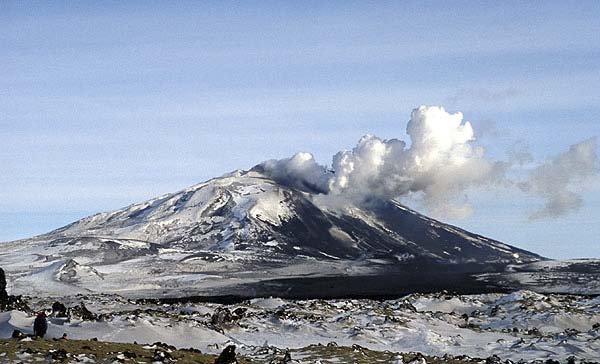
Iceland is a place filled with legends, but the legend lay in the land as well. The powerful volcanic forces have forged a rugged and beautiful land. Hotspots of sulfuric pools and steaming vents dot the surface, and black caves of volcanic stone cut dark and twisted paths in the depths. Hekla, a particularly active volcano situated on the south side of Iceland, was said to be of particular importance to witches who apparently gather there on Easter. This is because it was believed that Gates of Hell could be found in “the bottomless abyss of Hekla Fell”. Baula Mountain, some ways north of Reykjavik was formed when an enormous rock deep within the earth was thrust to the surface by tectonic forces. On the very top the mountain lies a glistening pond and it is said that one night a year a wishing stone rises to the surface, and that it and its power belonging to the one who can claim it.
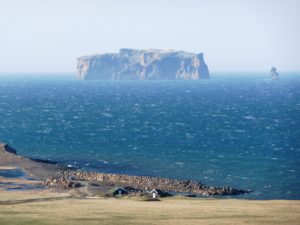
Legends also tell long ago of a demon lived on the dark cliffs of Drangey island. When people would climb the cliffs to collect the eggs of seabirds the demon would attack them and cause them to fall to their deaths. Gudmundur the Good, Iceland’s patron saint, went to the Island of Drangey to bless it. Gudmundur blessed all the spots until he found the demon perched on the last vestige of unblessed space. “Even the darkness needs safe haven” said the demon. Gudmundur had much compassion for the demon, so he left that spot unblessed and since then, the spot is called “Heathen Cliff” and eggs are never gathered there.
Iceland is a very mystical place, its legends, its people, its landscape all make for a unique experience. Its position halfway between North America and Europe make it a convenient place to visit before moving on. I’ve had the good fortune to have visited Iceland before and can honestly say it is something you wont want to miss, and will never forget.
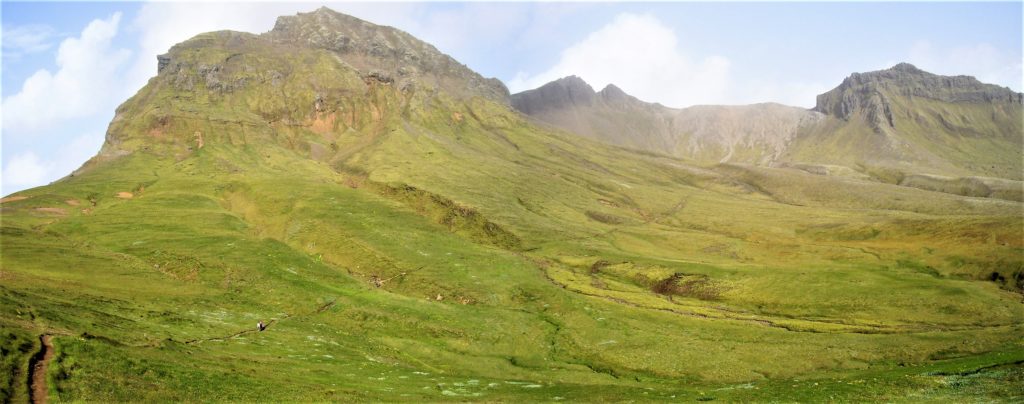
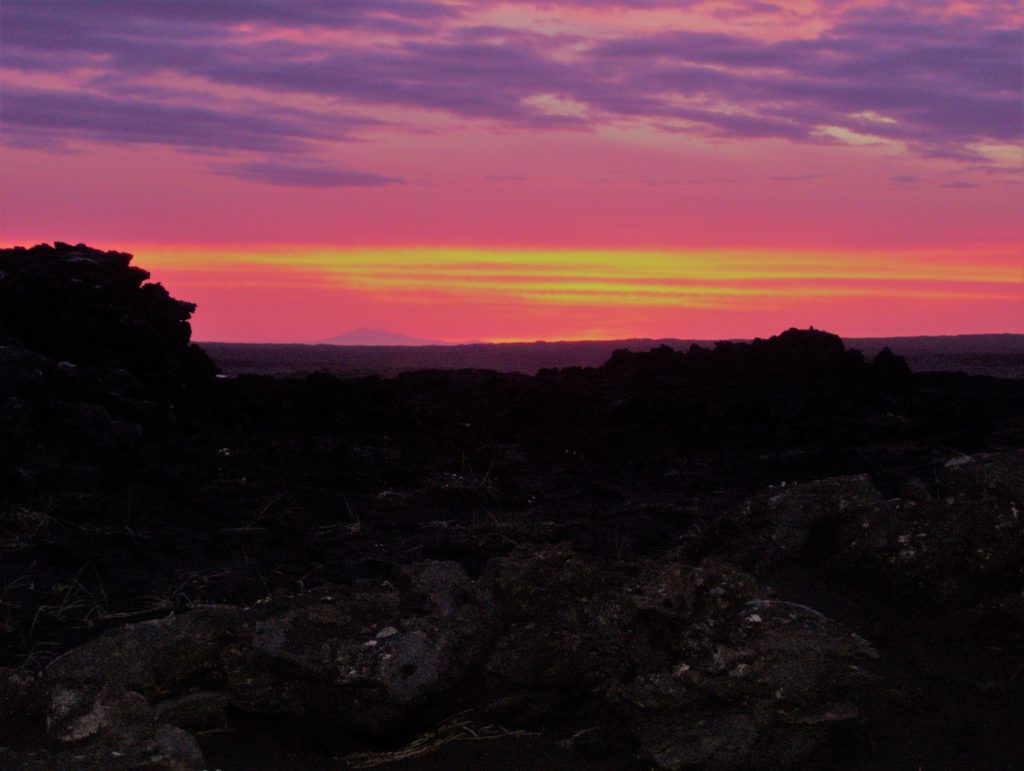
So cool to read about my friends country.AMAZING.
Iceland is an incredible place! Glad you enjoyed reading about it 🙂